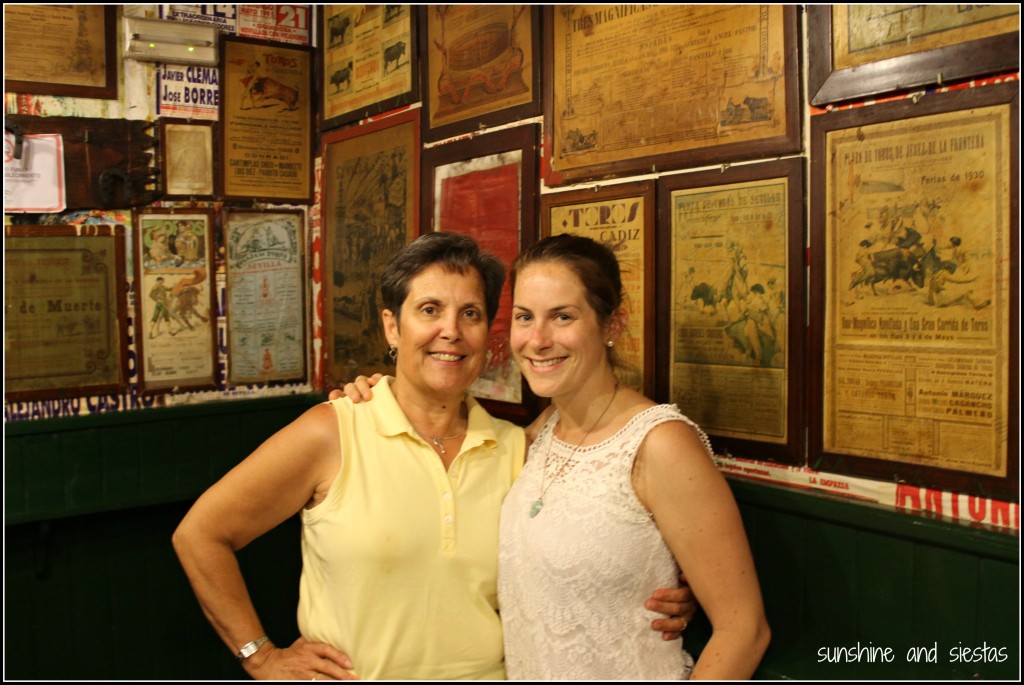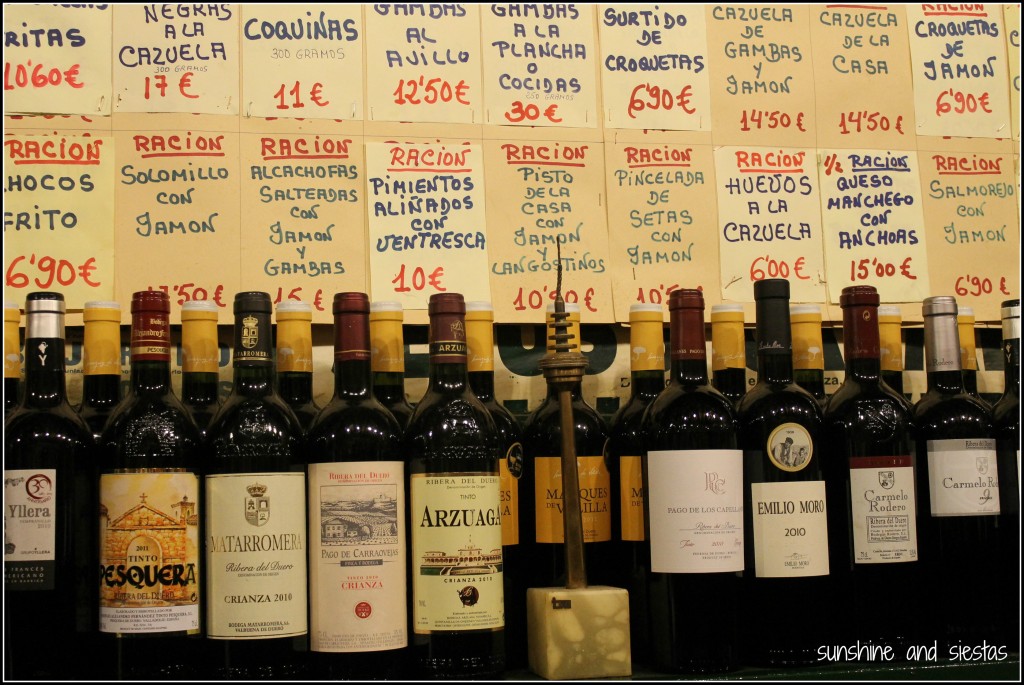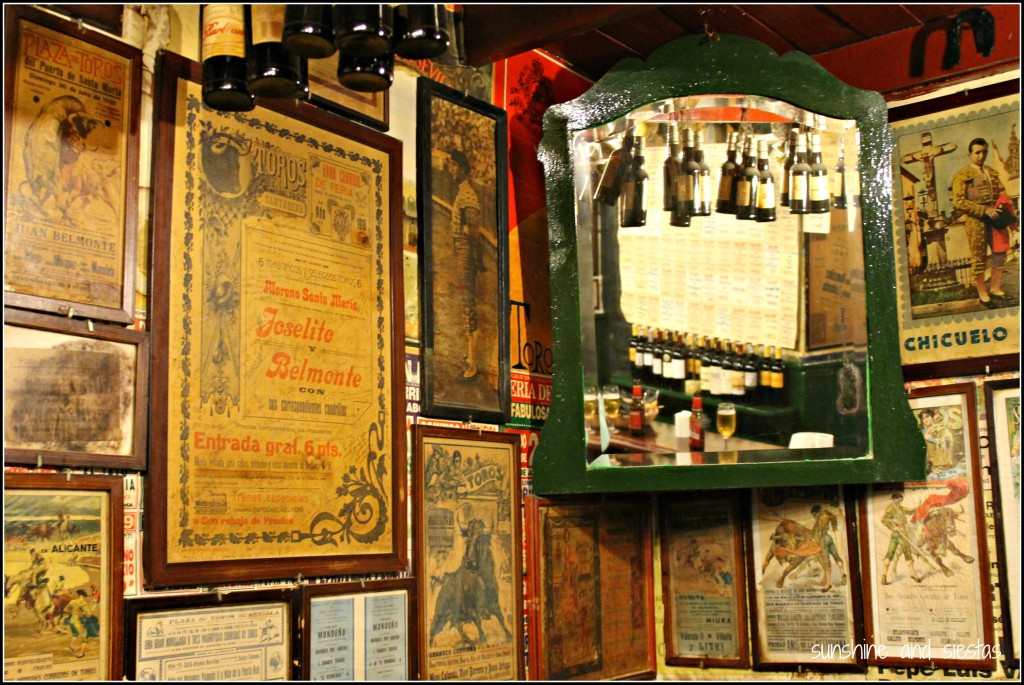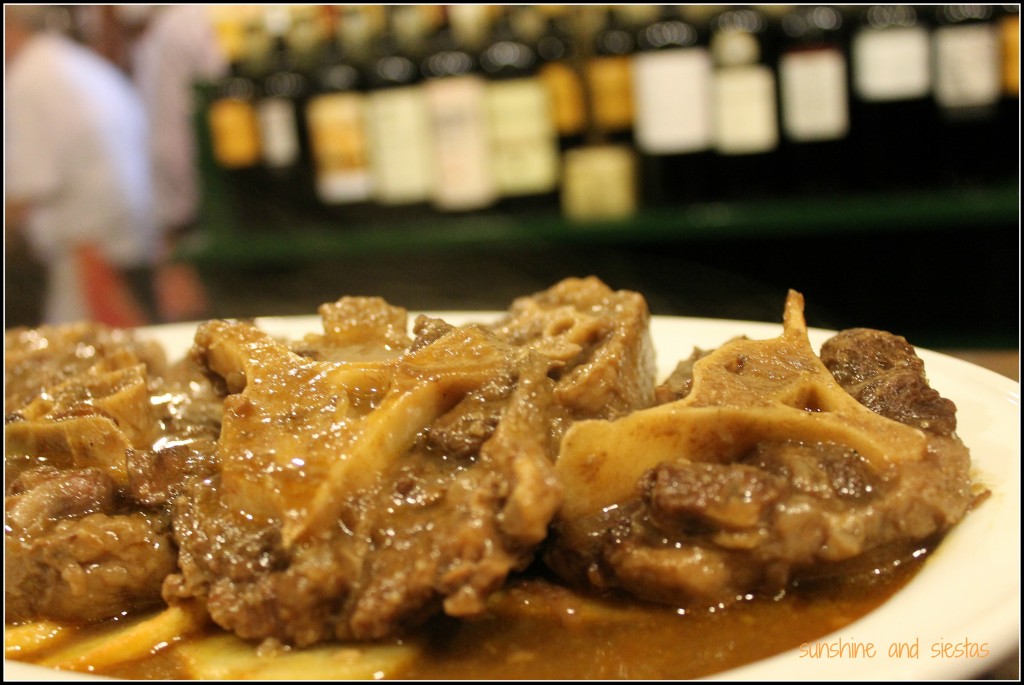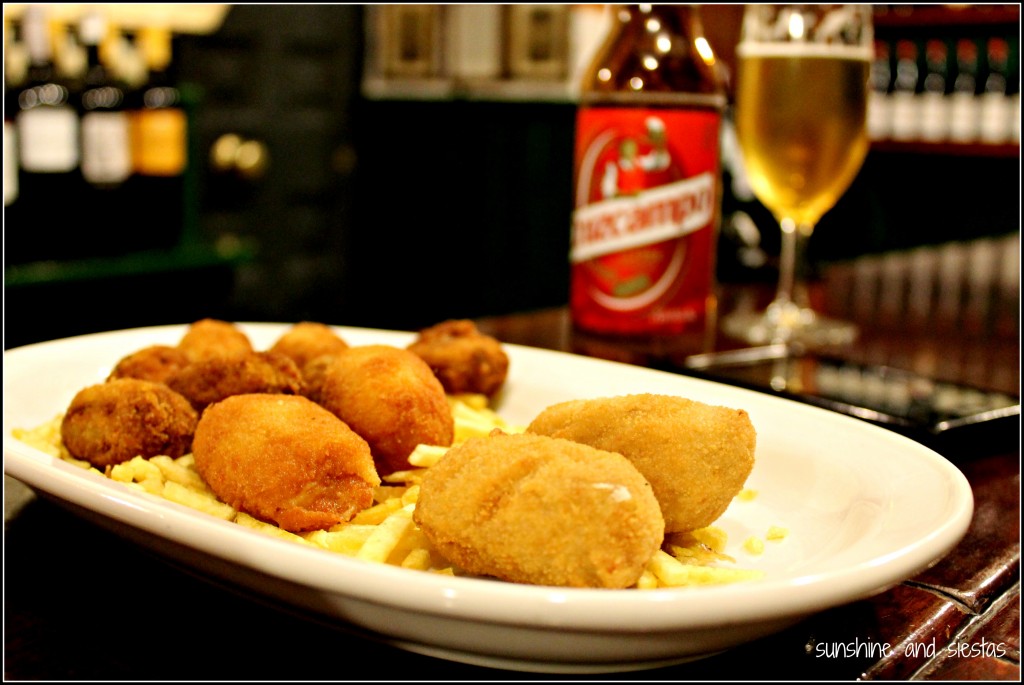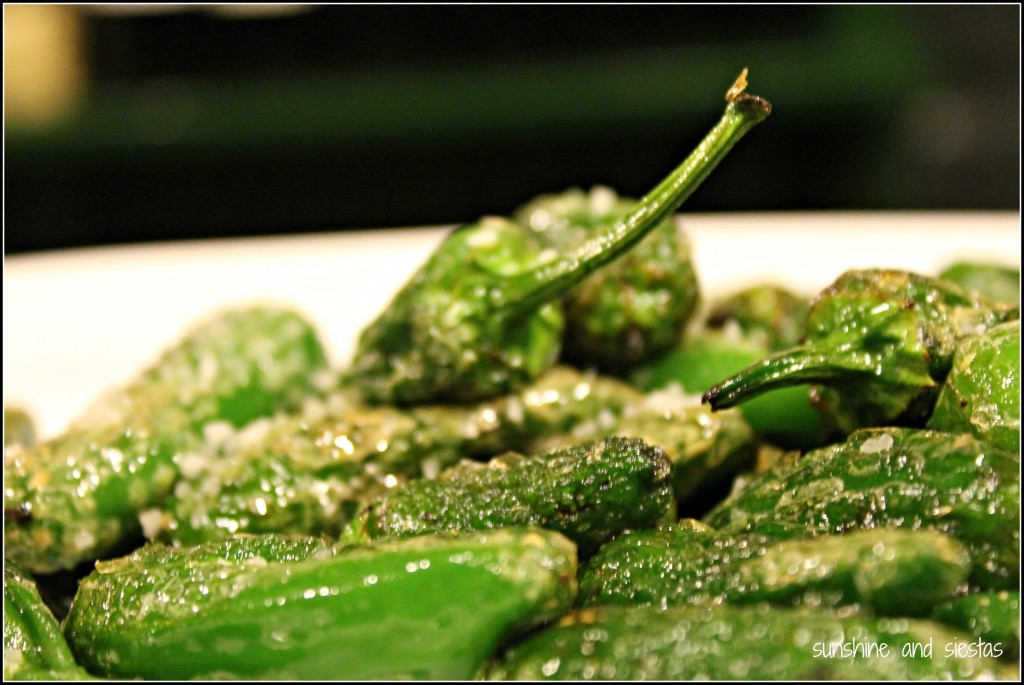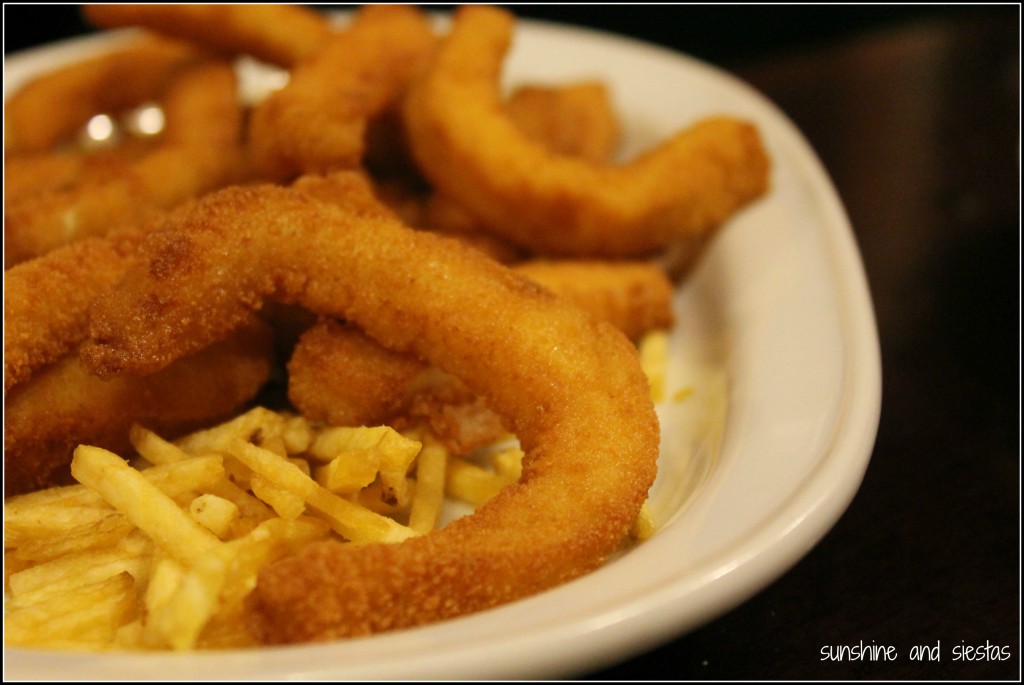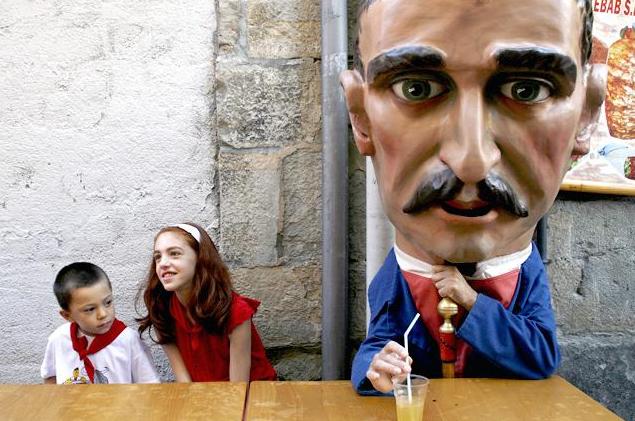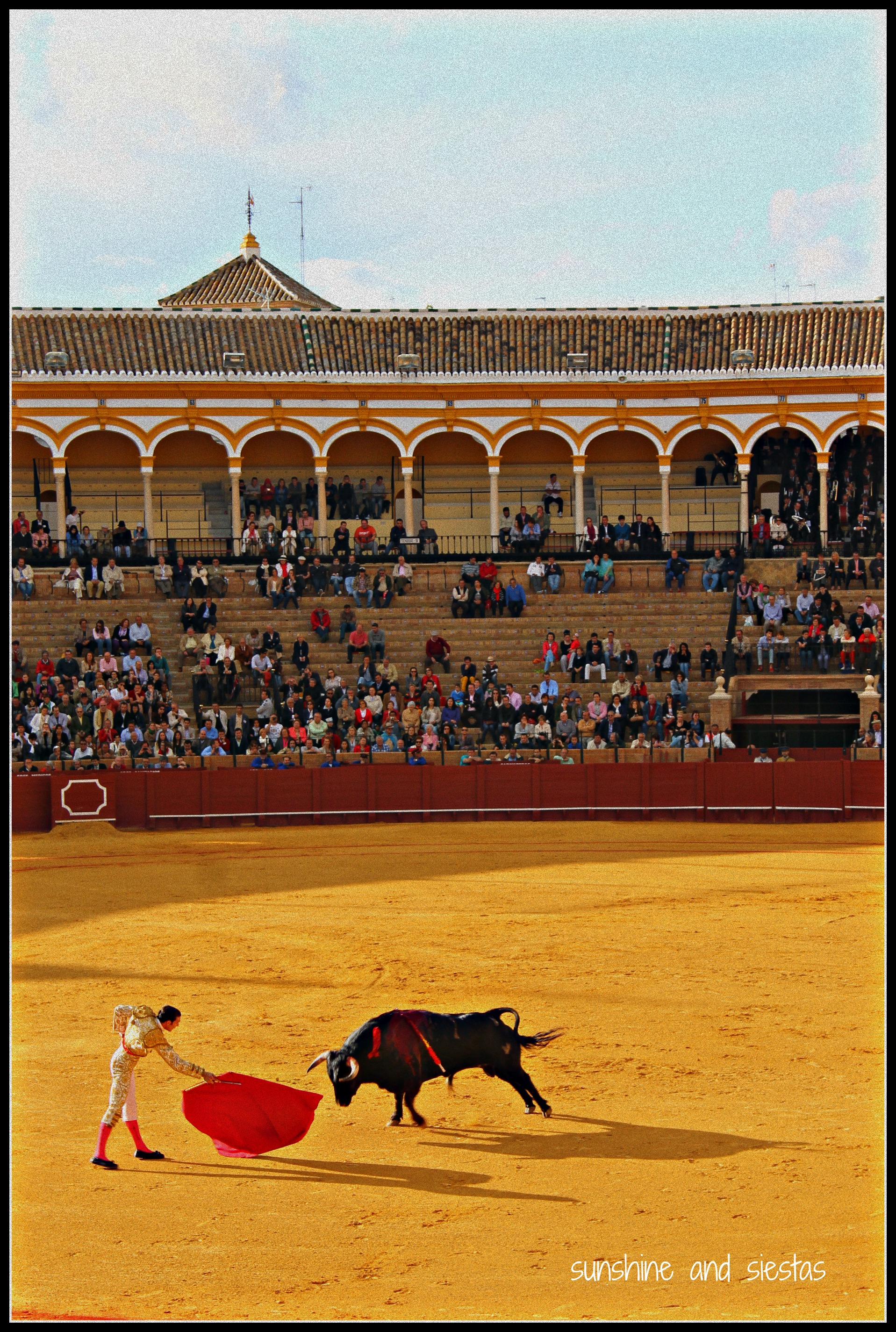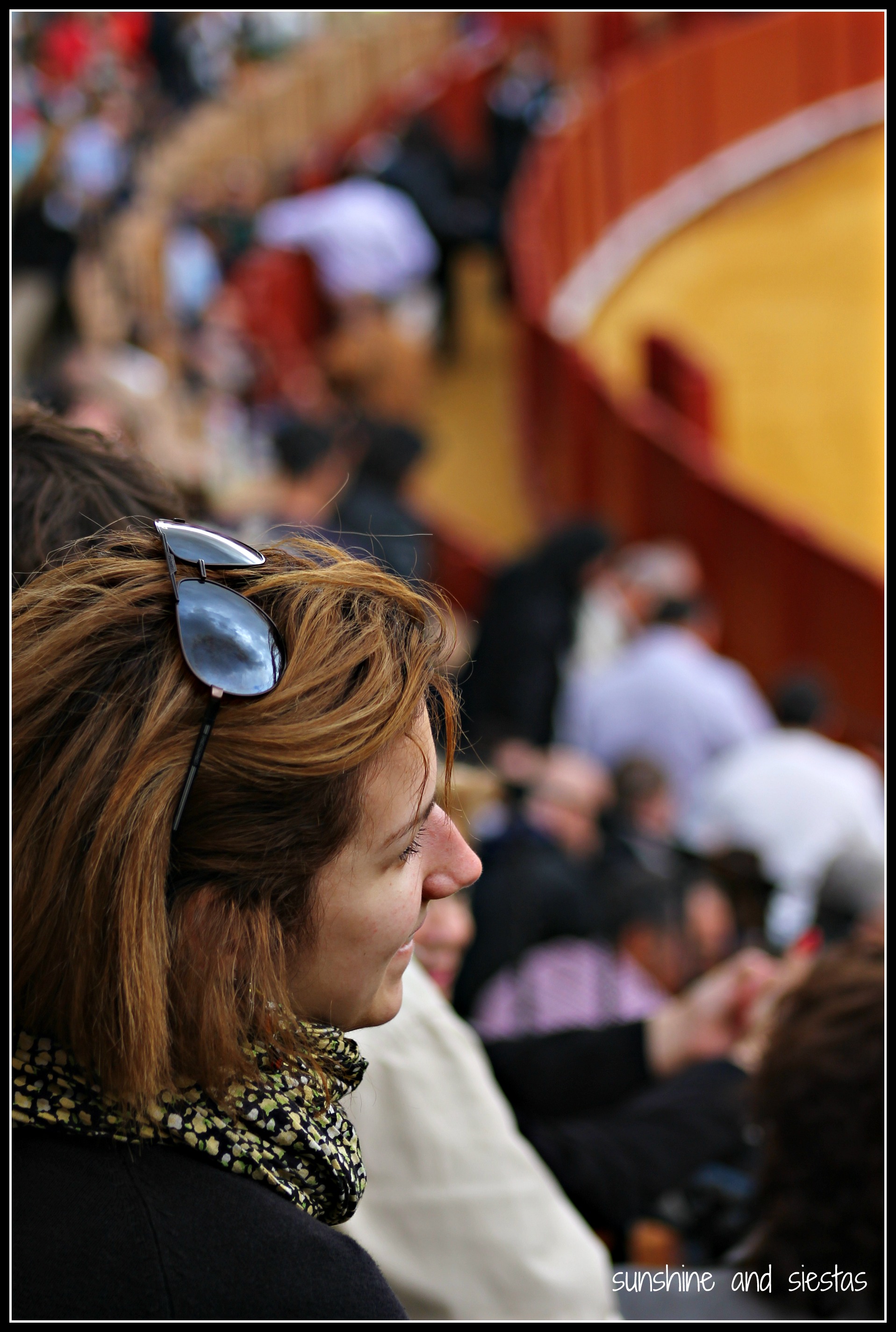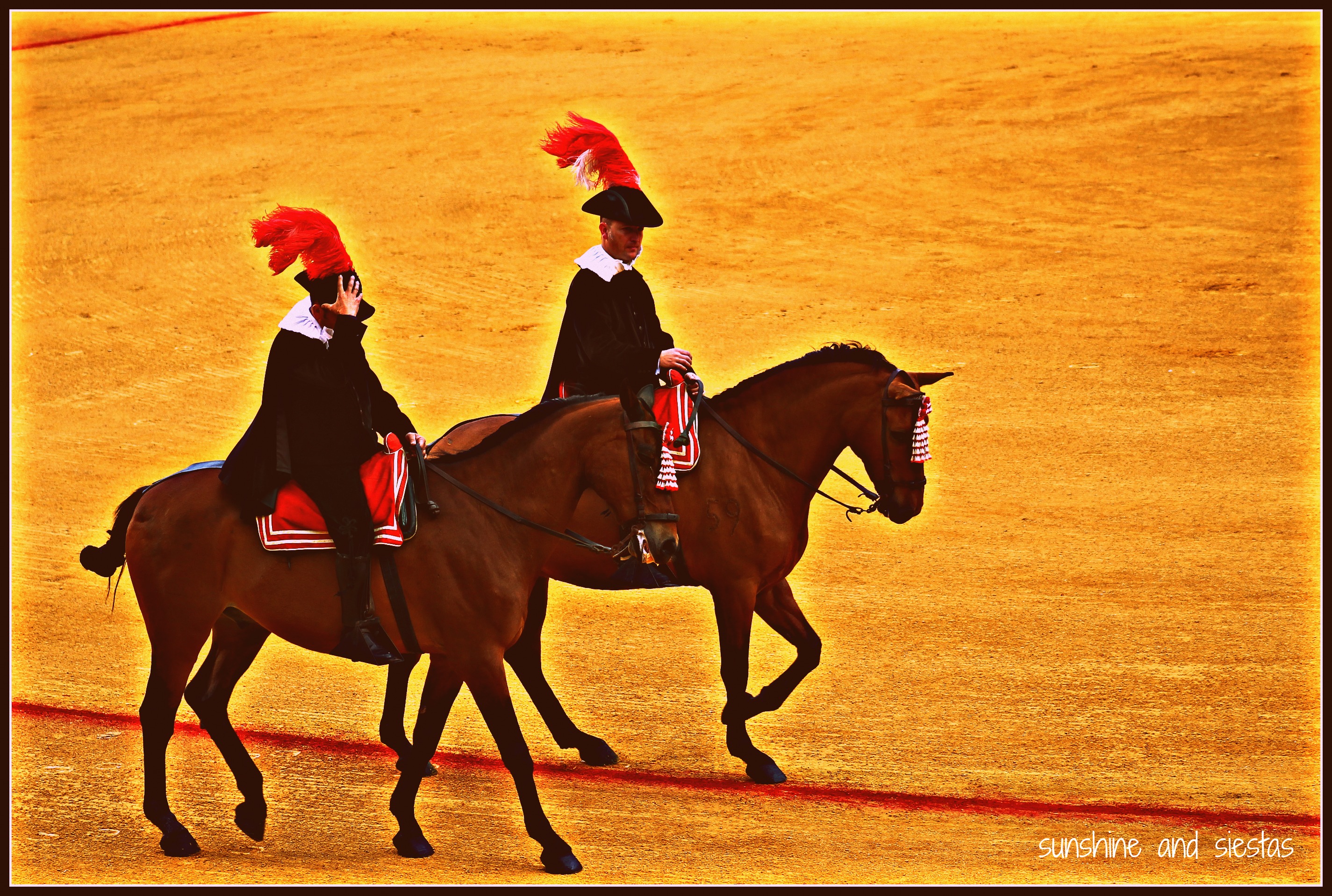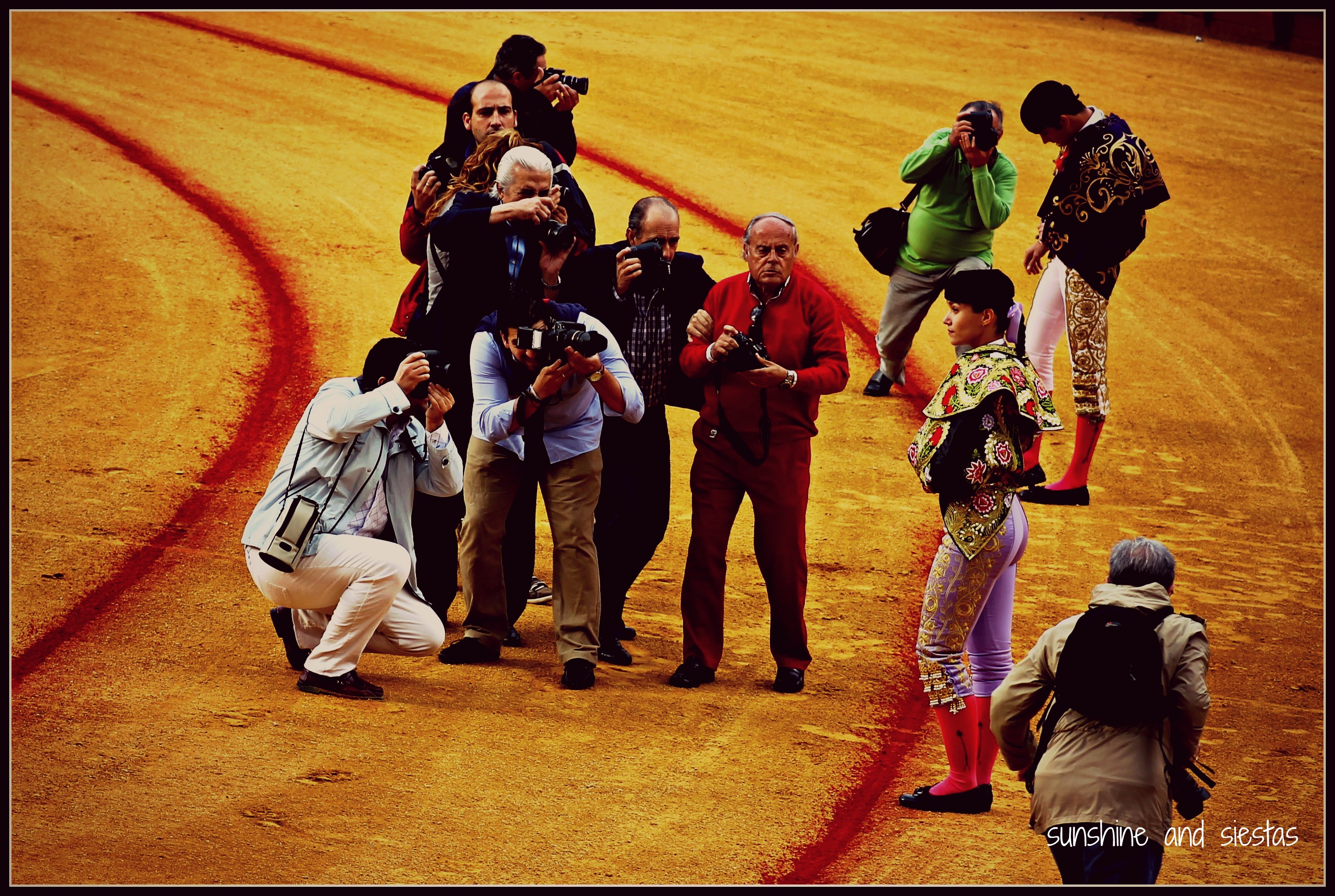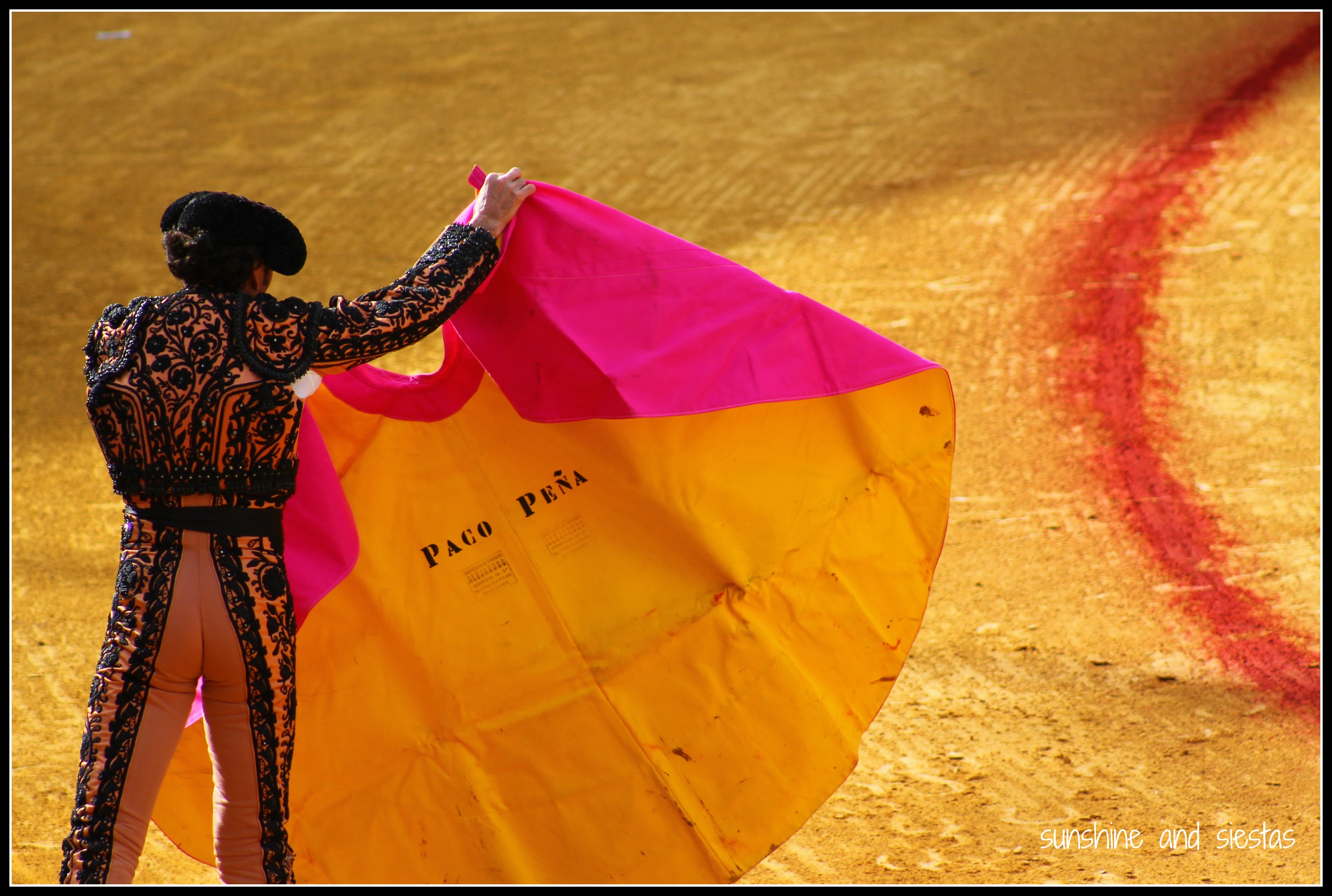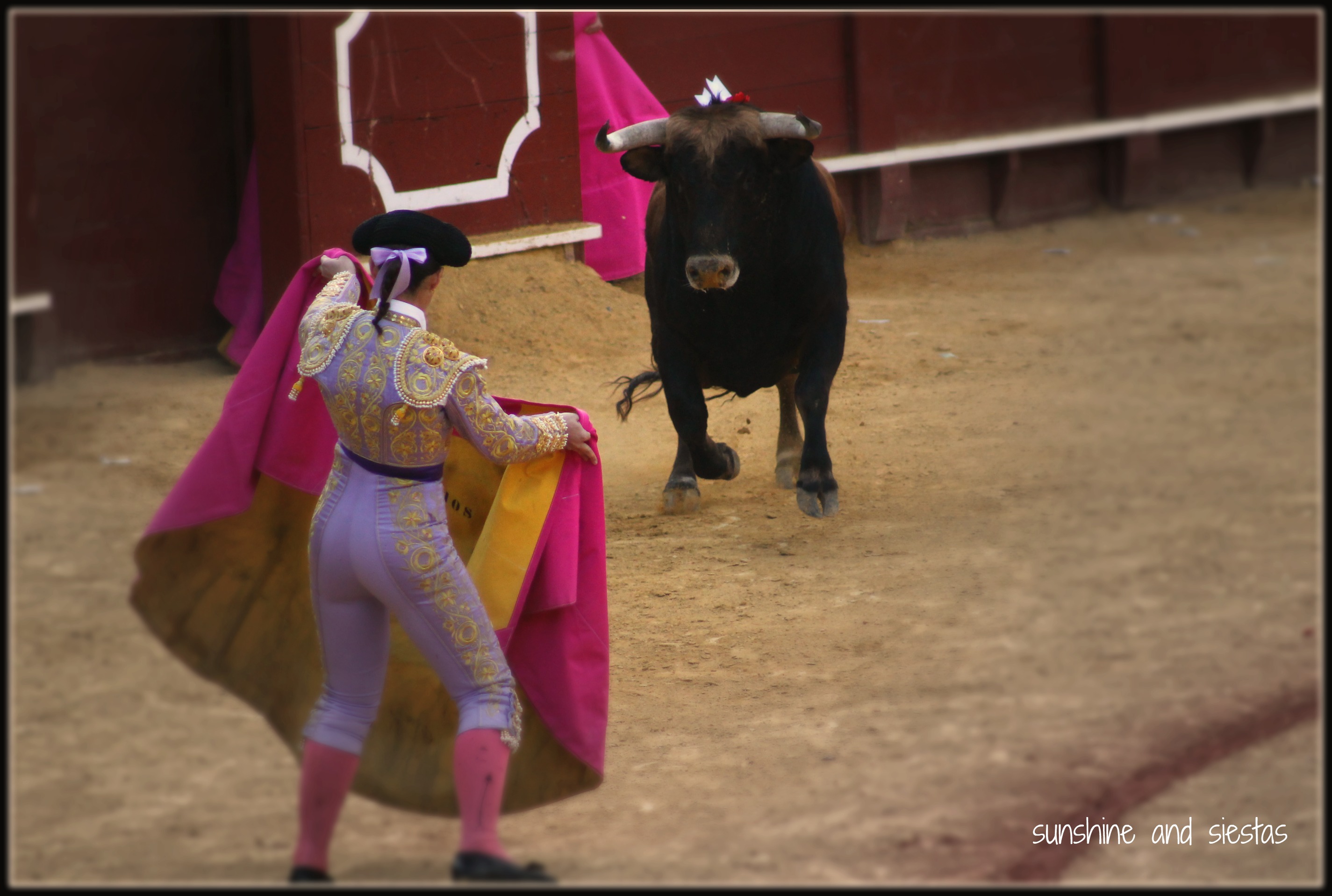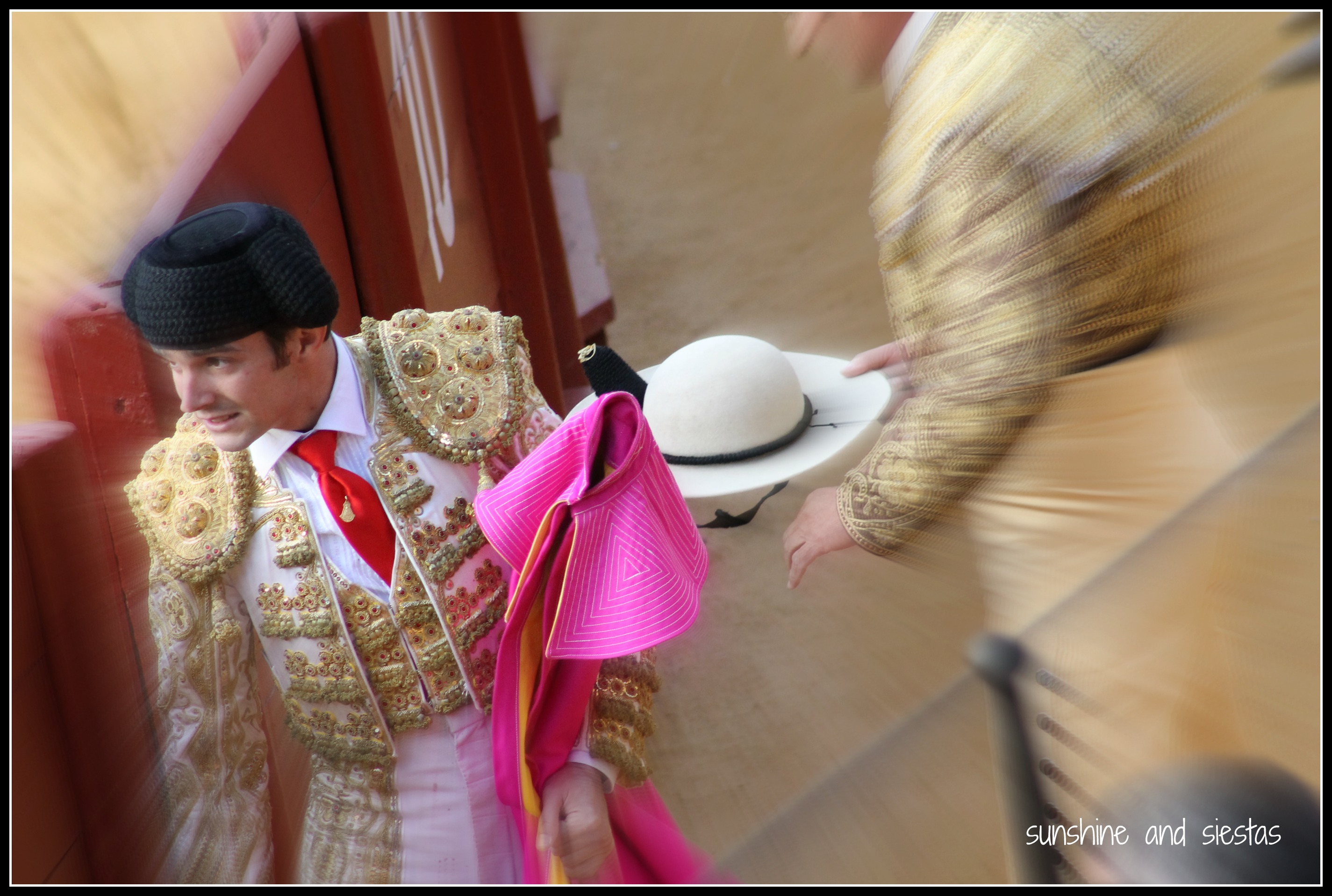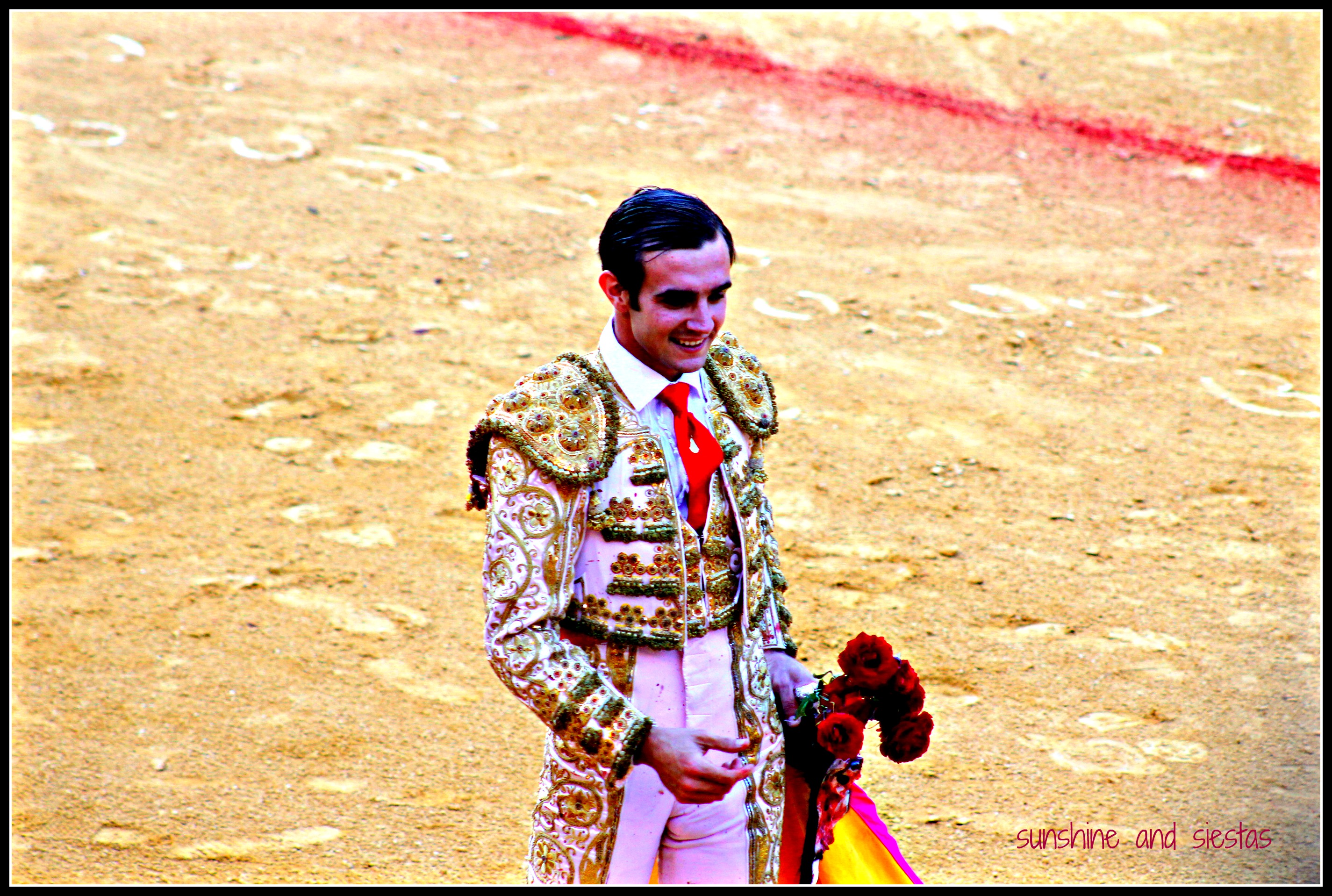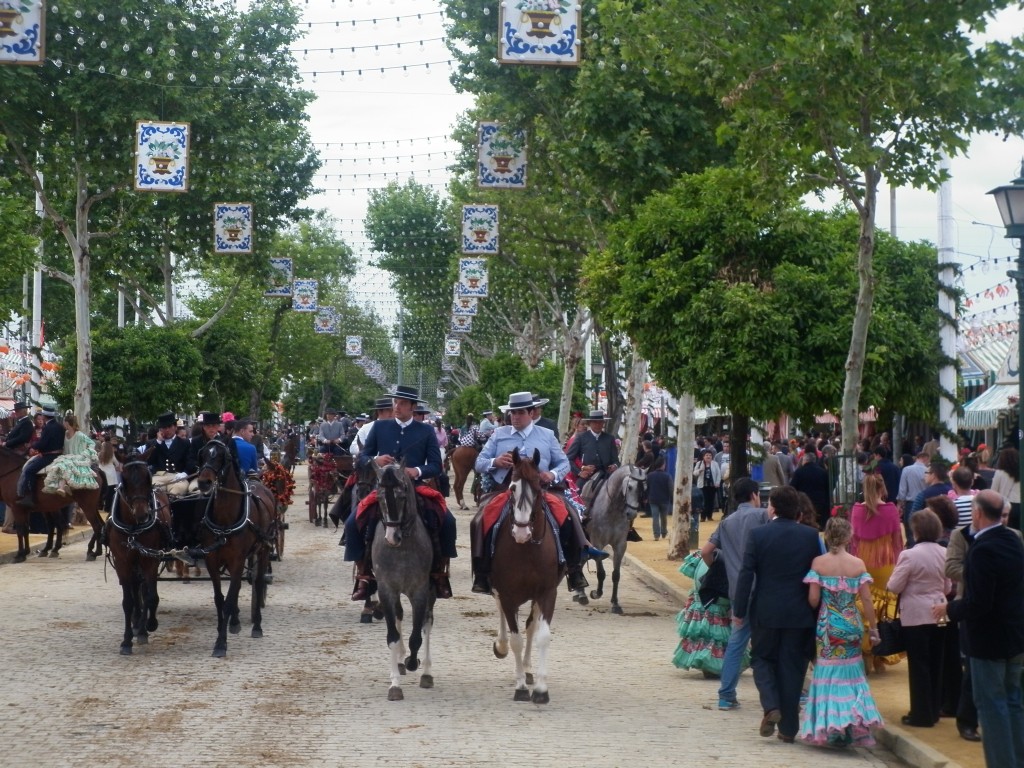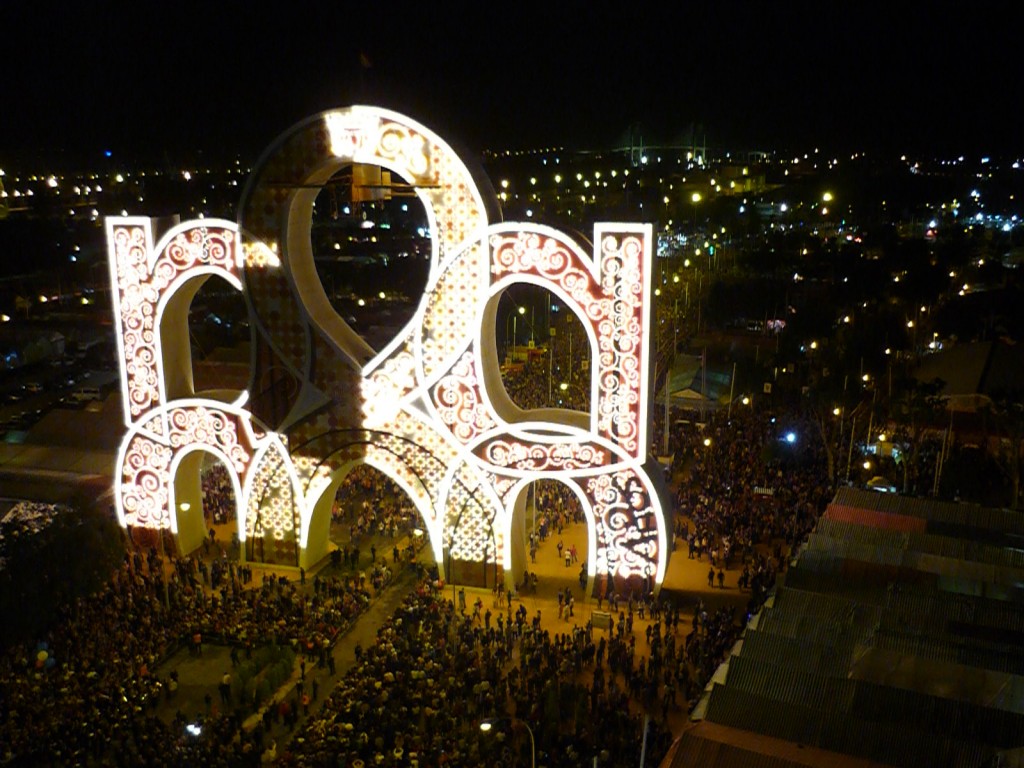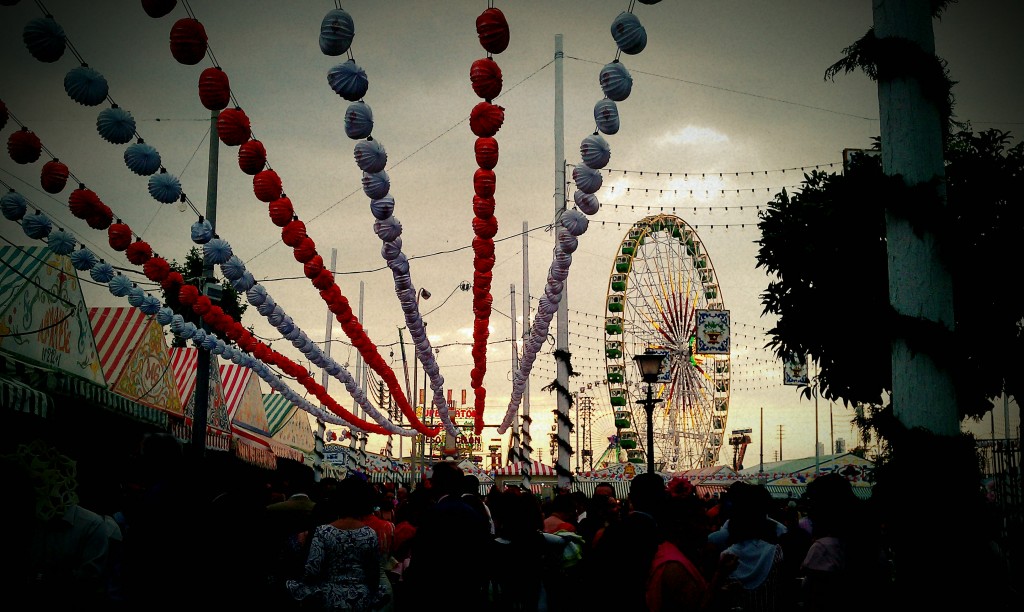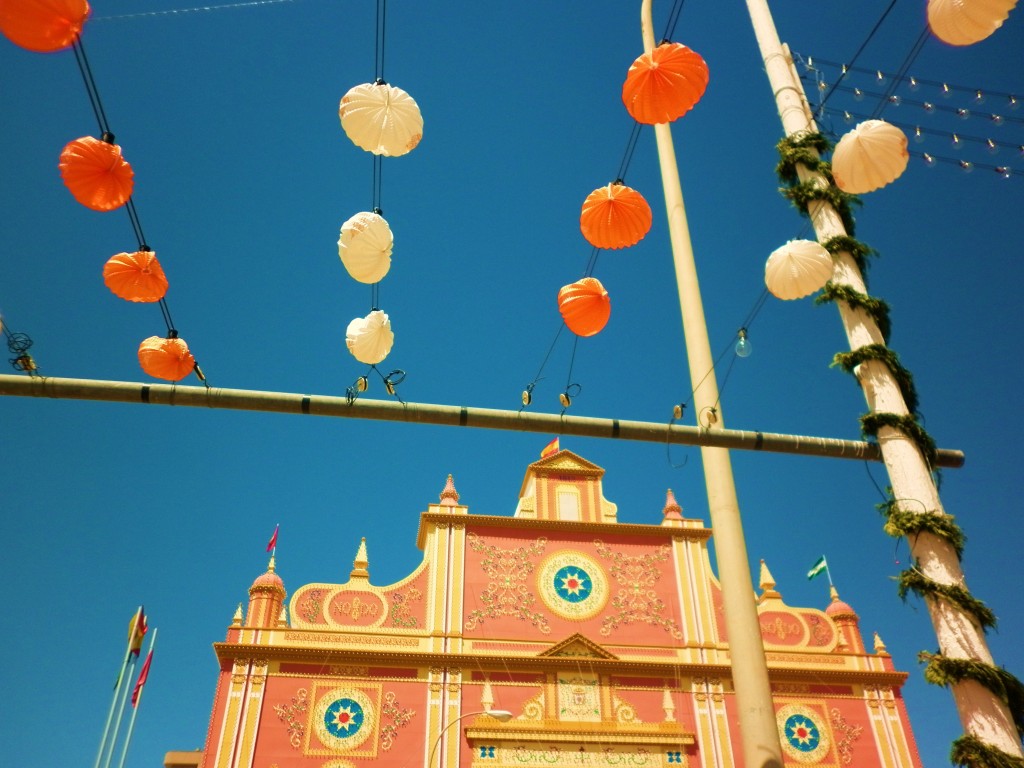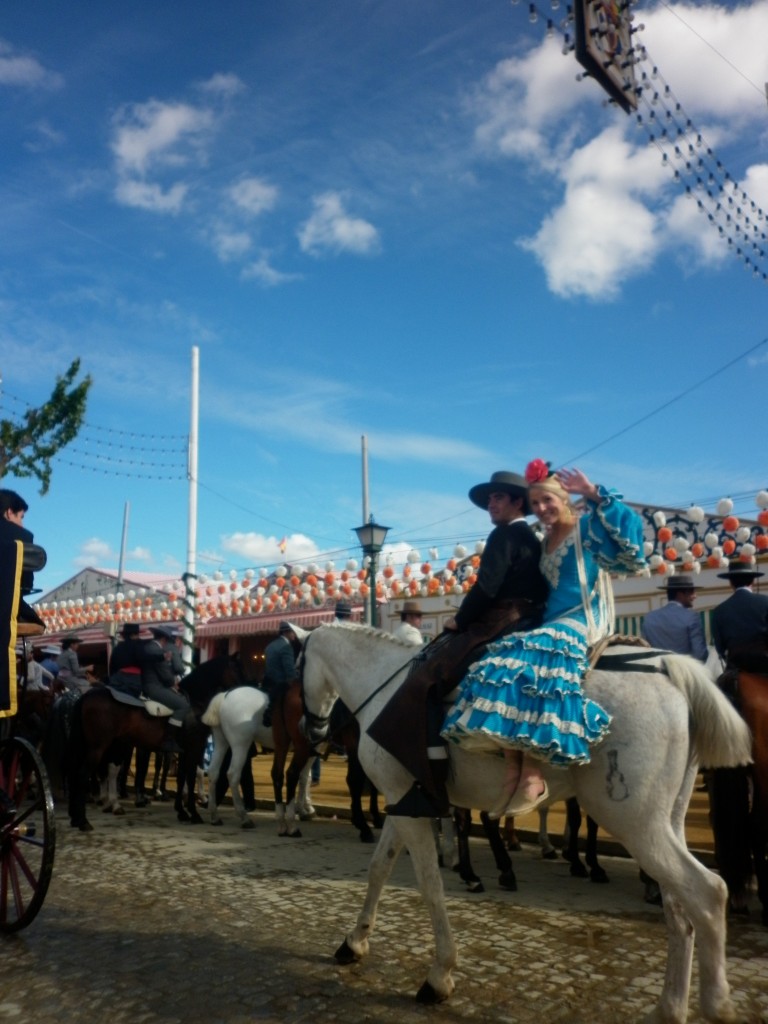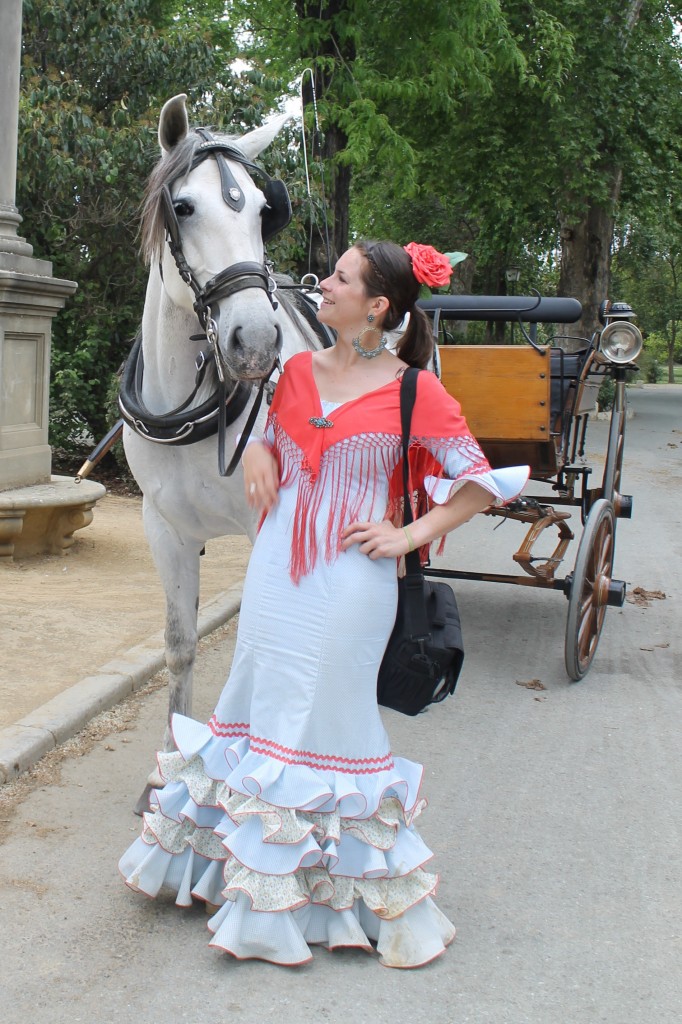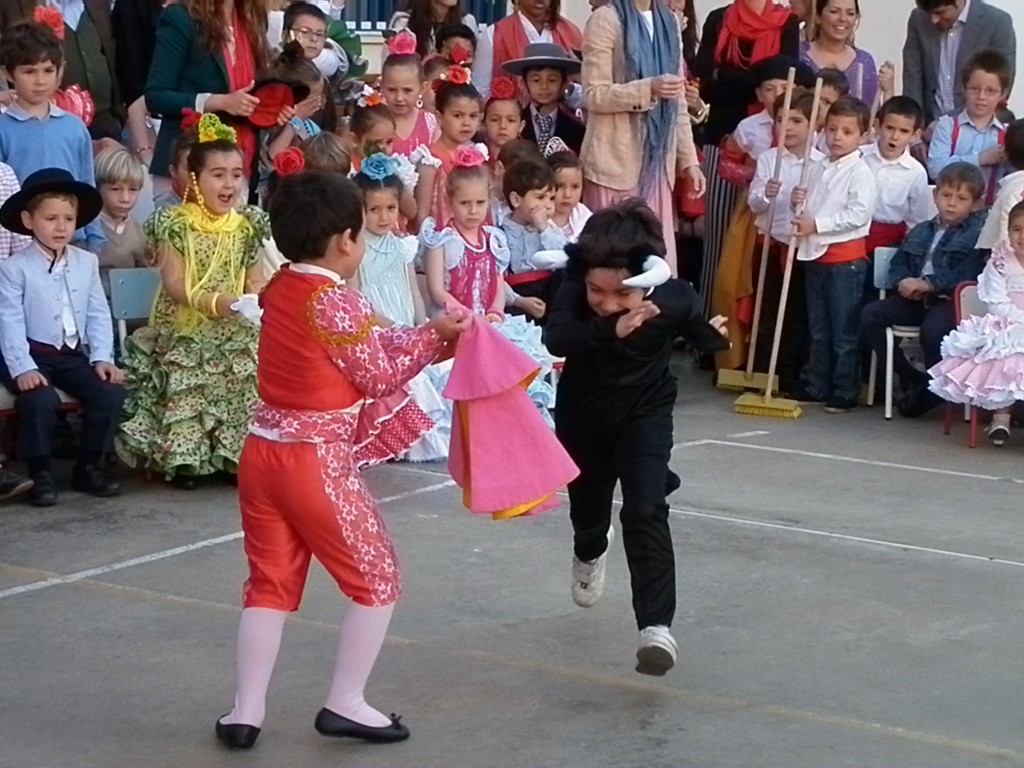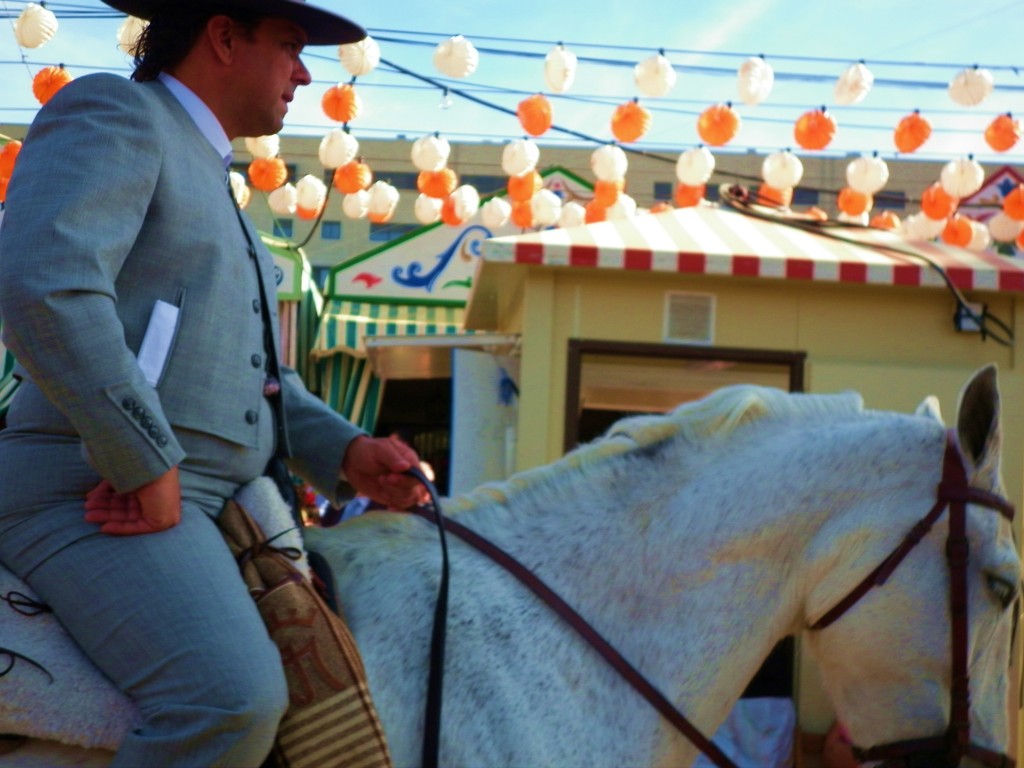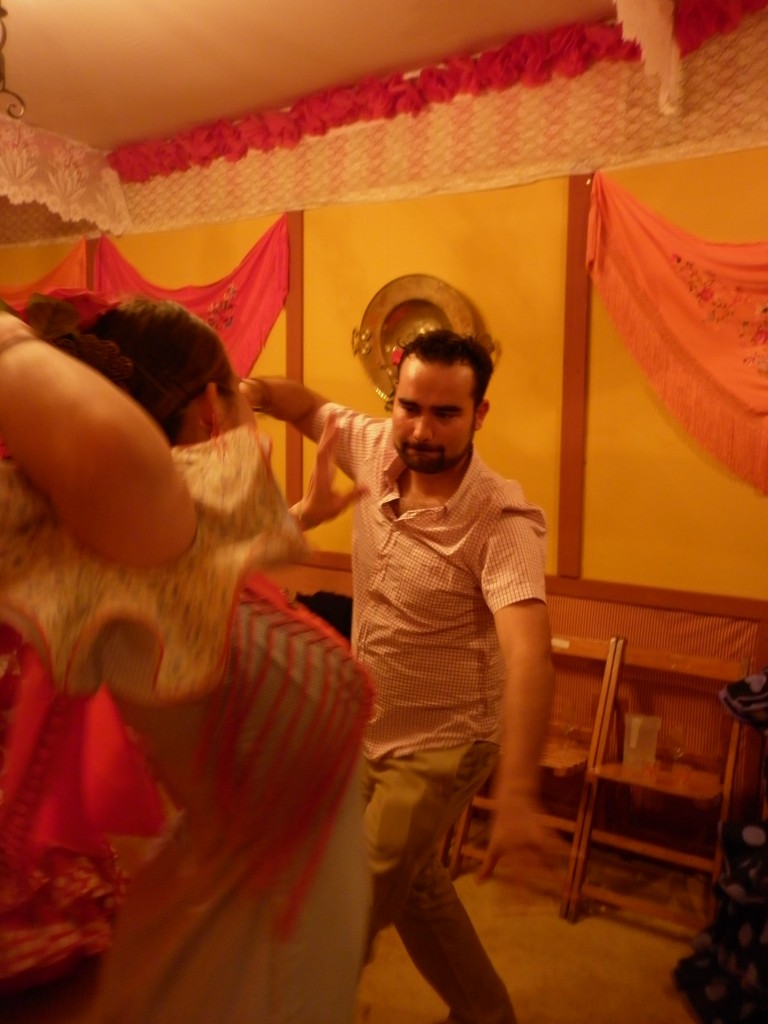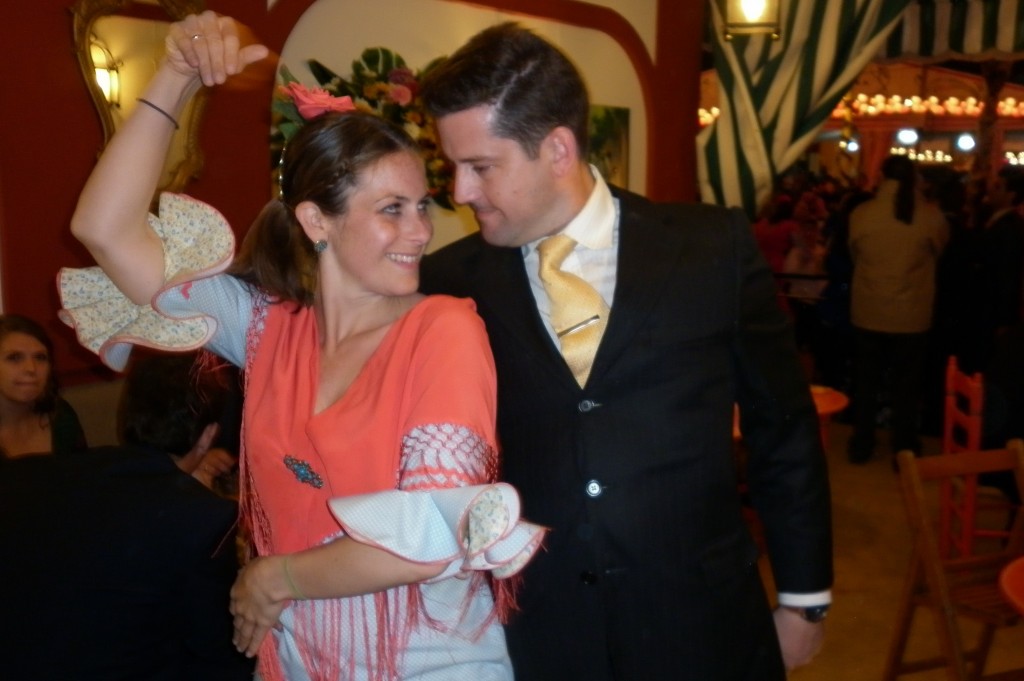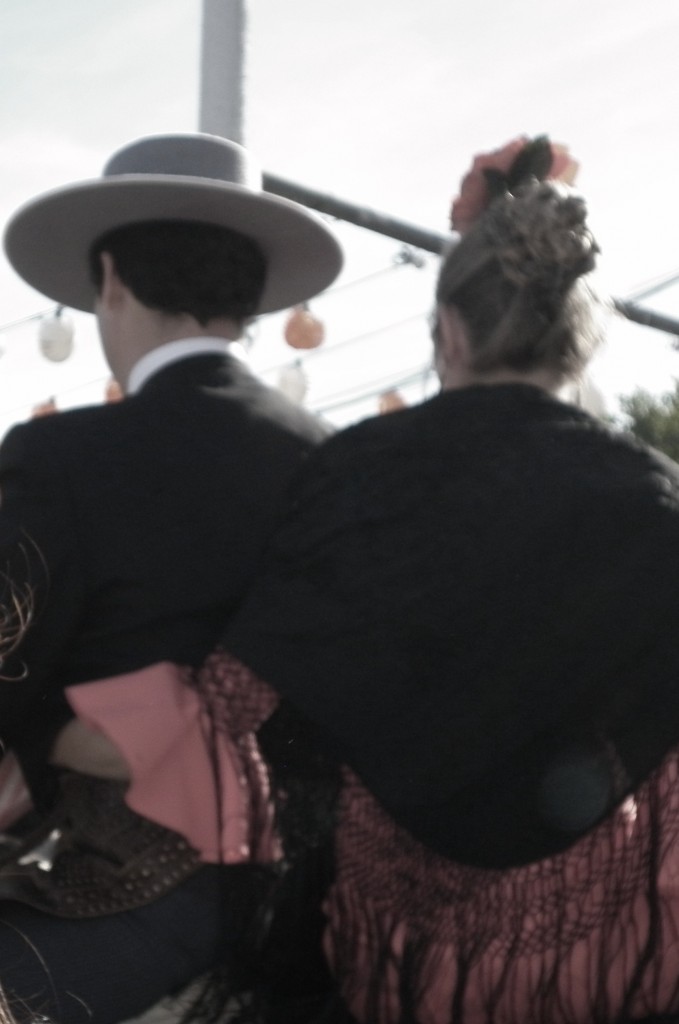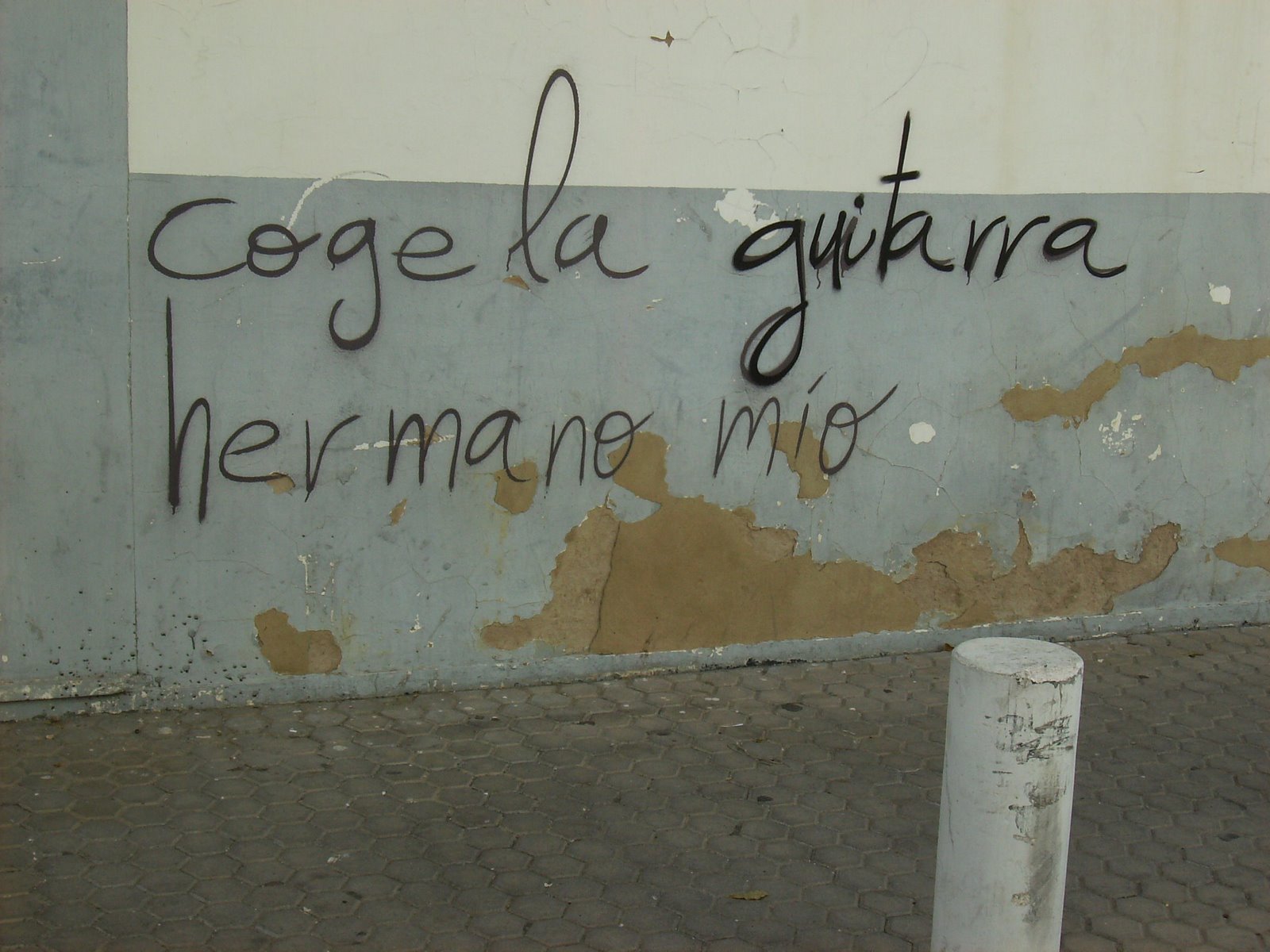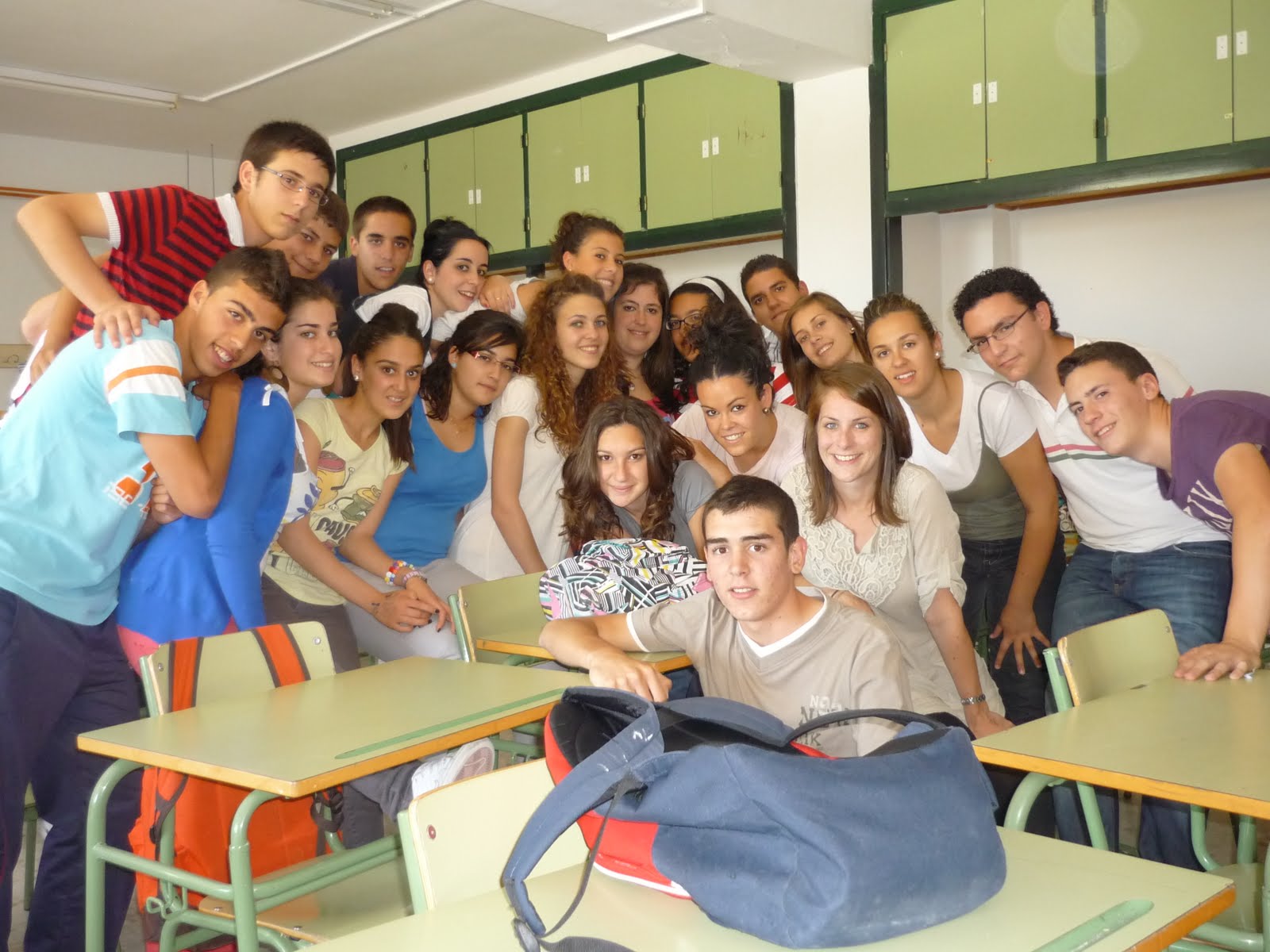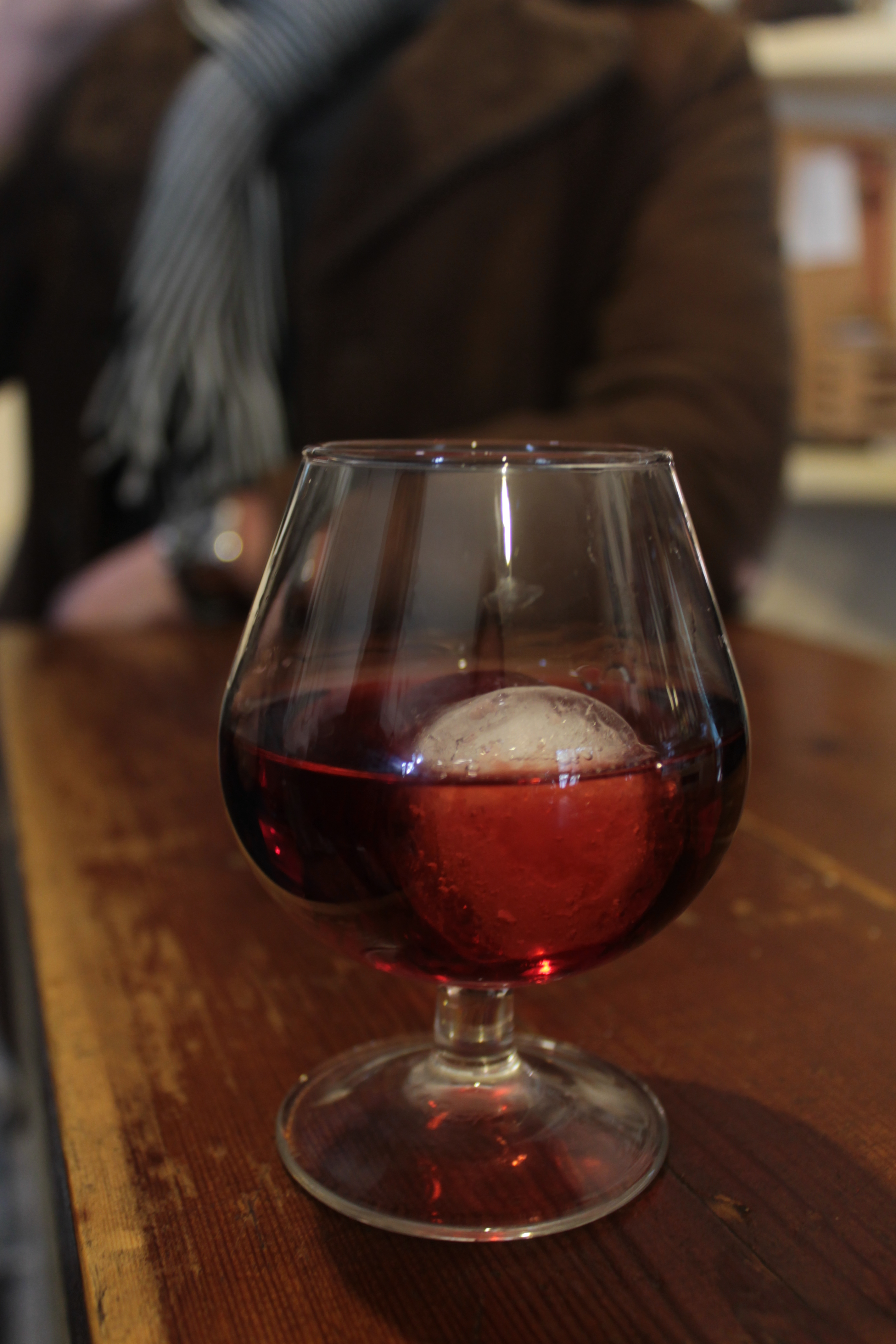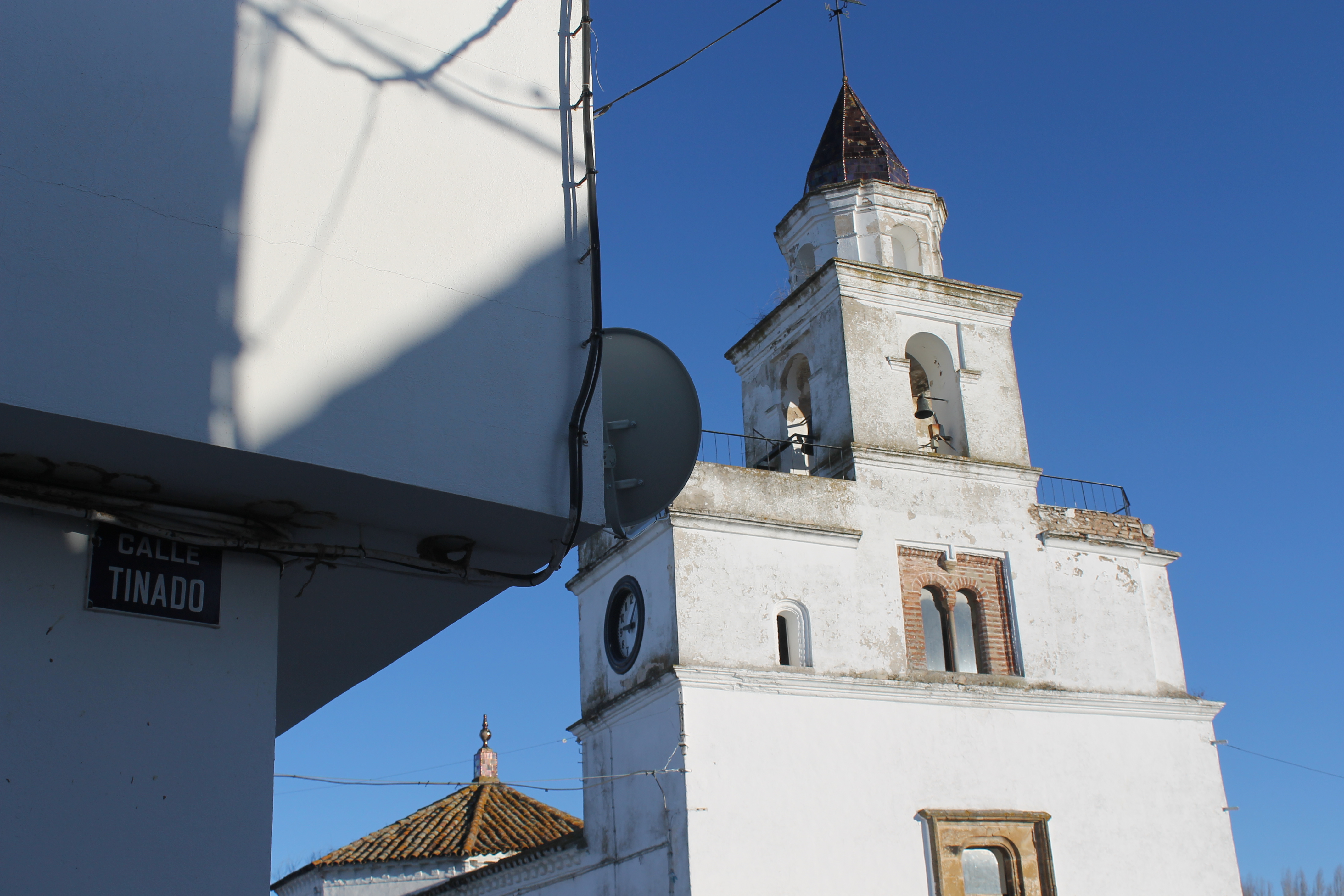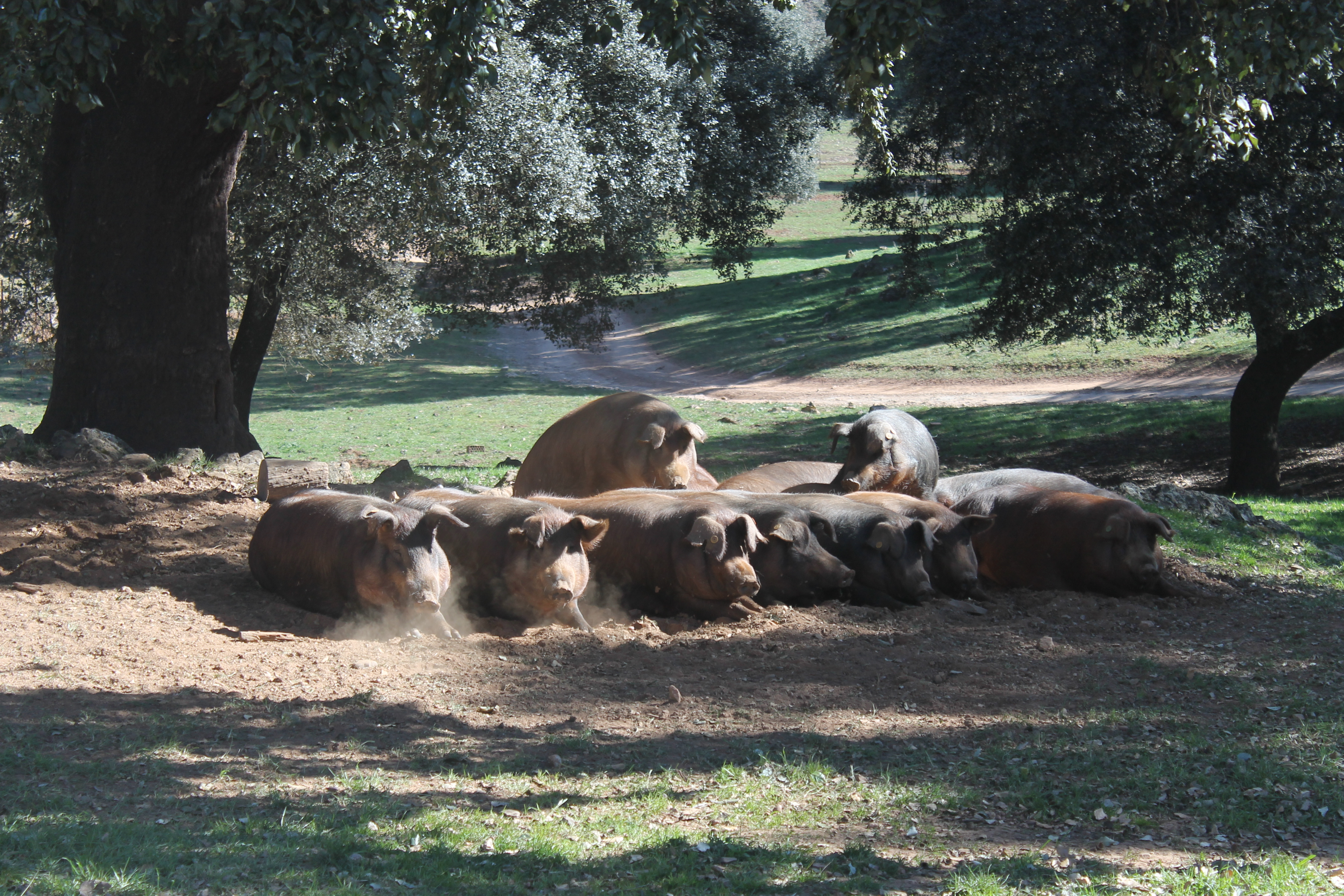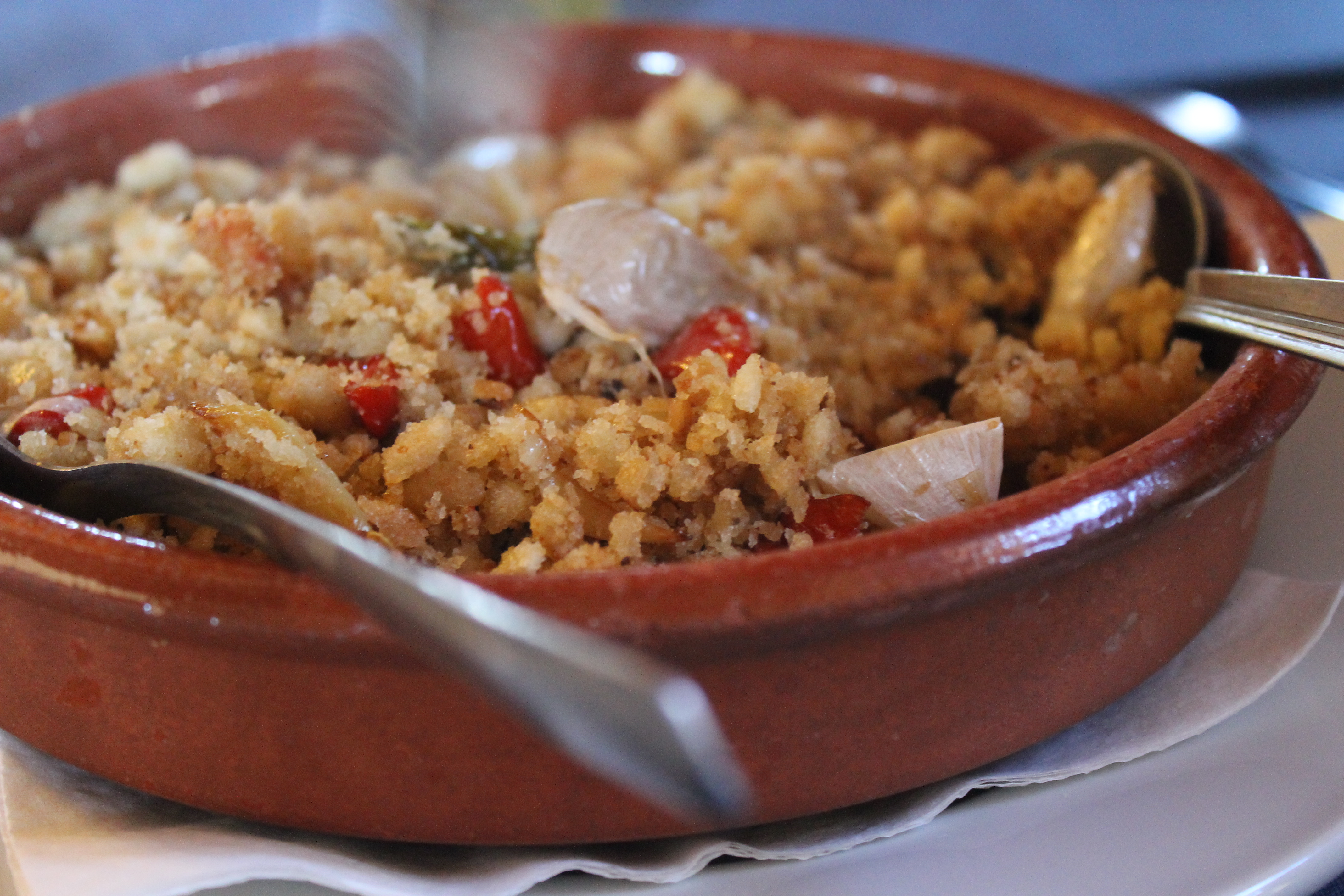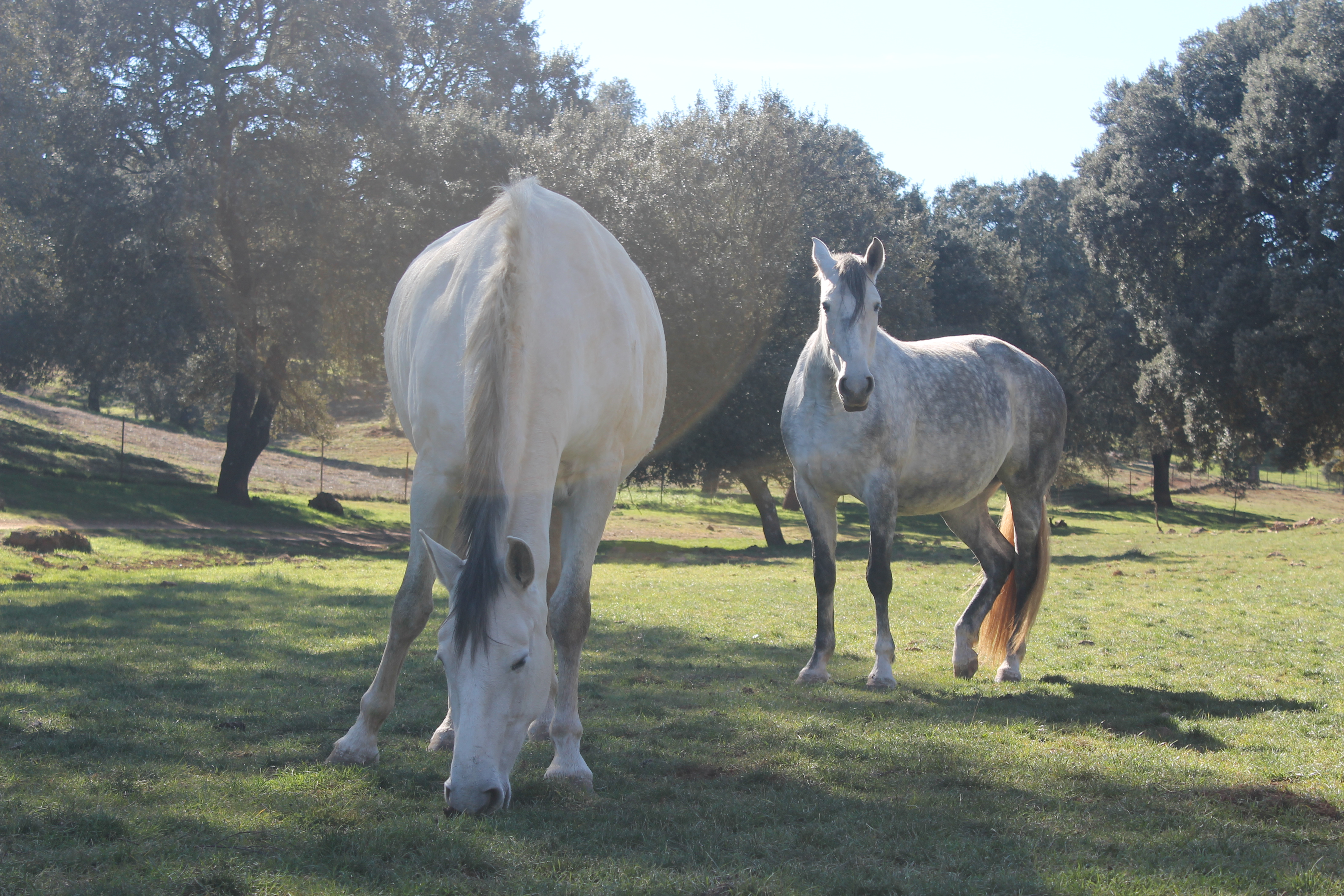Some places have now become tradition with me and the Novio when we have guests – everyone from a sorority sister and her husband to my own mother have had lunch in Sol y Sombra, a restaurant in the northern end of Triana.
The dimly-lit bar is remniscent of establishments from ages past – yellowing, cracked century-old bullfighting posters, a menu written by hand on the wall, dusty wine and brandy bottles resting under them. Those thin napkins that don’t lap up anything aren’t found – instead, you wipe your hands with rolls of toilet paper.
And there’s ham.
Like, dozens of hams hanging right over your head with little plastic cups for catching the sticky fat that rolls off the meat as it matures.
When the Nov and I took Danny and Javi last week, the mournful saetas were echoeing throughout the long, thin bar. At 2pm, the place was empty, so we set up along the bar, feet covered in albero.
The menu is replete with sevillano favorites – revueltos, fried fish, hearty meat stews. Food is only served in half or full rations, and not tapas, and vegetarian options are slim.
The one dish we always order is stewed bull tail, cola de toro. The tender meat comes with the bones and fat in all its glory, served with potatoes. On the last trip, we went all out – a round of croquetas, choco frito, pan-seared pimientos del padrón and the cola de toro.
If you go: Sol y Sombra is located on Calle Castilla 151, just around the corner from Ronda de Triana. Open Tuesday – Sunday from 1pm to 4pm and 8pm until midnight. Expect to pay 10-15€ a head with drinks.
